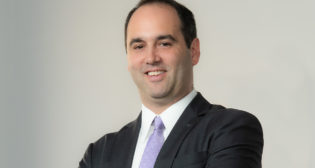
Congress Needs to Move Forward, Together
Written by Chuck Baker, President, ASLRRA
ASLRRA PERSPECTIVE, RAILWAY AGE, JUNE 2021: In May, I was one of four witnesses fortunate enough to testify before the Senate Commerce Committee Subcommittee on Surface Transportation as it began work on surface transportation legislation. In another hopeful sign, the hearing was held face-to-face in the Committee room, and I am taking it as a good omen that my first in-person appearance in Congress in more than a year was to present the short line industry’s case for a robust infrastructure package with beneficial policies.
The economic and environmental benefits inherent in rail transportation are significant and well-documented. At this Senate hearing, and at a similar hearing in March before the House Transportation and Infrastructure Committee, we offered legislators a series of suggestions for the surface transportation bill that will enable short lines to maximize those benefits for the country.
We strongly support the CRISI (Consolidated Rail Infrastructure and Safety Improvements) grant program as it is the primary grant program that supports short lines and provides for direct short line eligibility. The funding level should be increased, and there should be no large new commuter rail or other megaproject set-asides that squeeze out short line participation.
We support the INFRA (Infrastructure For Rebuilding America) grant program, or a successor program such as Projects of National and Regional Significance, as proposed in H.R. 2 in 2020. There is value in this merit-based discretionary grant program open to multiple modes of transportation, and we offer changes that would benefit short lines, including fully removing or significantly increasing the $500 million cap on non-highway portions of the multi-modal freight projects, and increasing the 10% limit on small projects.
Short lines should be directly eligible applicants for project grants, as is the case for CRISI. Programs only open to local units of government require short lines to create unnecessarily complex applicant structures. As long as a rigorous cost-benefit analysis is required, the applicant’s entity should not matter.
As was done in various versions of proposed infrastructure packages in 2020, the National Highway Freight Program should become more multi-modal and raise or eliminate the non-highway cap so that the program can become a source of funds for State DOTs to support freight rail projects if they choose.
On the policy and regulatory front, we urge Congress to refrain from implementing rules that threaten the economics of short line railroading, including increasing truck size and weight limits, mandating freight train crew sizes, banning the transportation of liquefied natural gas, and implementing arbitrary and unworkable blocked-crossing timetables.
In another hopeful sign of the times, it is evident that the transportation industry is ready to work together to move forward, and we are counting on Congress to take the same approach. Among the four witnesses at this hearing was Chris Spear, President and CEO of the American Trucking Associations. Trucks and short lines are intensely competitive. As Spear said, “We here testifying have no problem identifying issues of differences.”
But interestingly, each of our presentations ended with similar pleas for Congress to put partisanship aside and get on with the task of getting the job done.
In my words: “Government works when you work hard at working it out.” In Spear’s words: “Stop blaming each other for the things you don’t do and start taking credit for the things you should do.” Those are the sentiments of truckers and railroaders and most likely the majority of American workers. It should be the path forward for this important piece of legislation.
As readers of this column will note, this is the first time in many years that the short line industry’s primary legislative objective was not the extension of the short line rehabilitation tax credit (45G). That is because we finally secured permanency for the credit at the end of 2020. Enacting, extending and finally making 45G permanent was a 15-plus-yearlong march made successful by the tireless participation of hundreds of our short line members.
That effort has always been led by our Legislative Policy Committee (LPC), which is currently chaired by Genesee & Wyoming’s Jerry Vest. Jerry joined the LPC in 2006 and has served as its Chairman since 2014. He is now stepping down from the LPC Chairmanship, and a new LPC Chairman will be selected at our June Regional Meeting in Louisville.
Like his predecessors in that position, Jerry was a leader in defining objectives, developing strategy, implementing tactics and motivating a huge volunteer army of short line industry representatives. He pursued this objective with the tireless perseverance and laser-like focus that are essential ingredients for legislative success. We are grateful for the commitment he made to an endeavor that has done so much to preserve and enhance short line railroad infrastructure across the country.
Thank you, Jerry.



